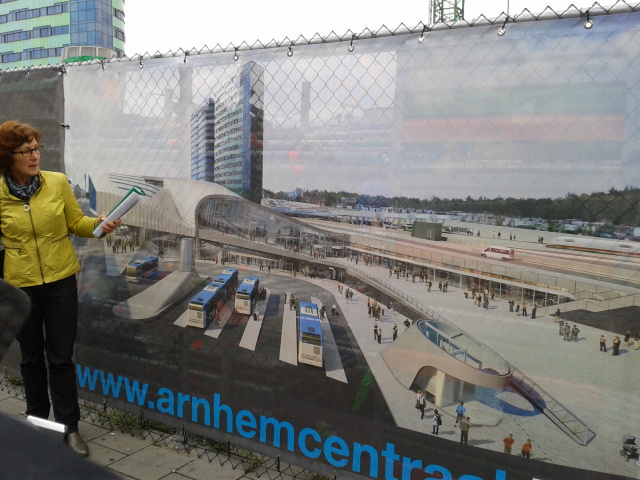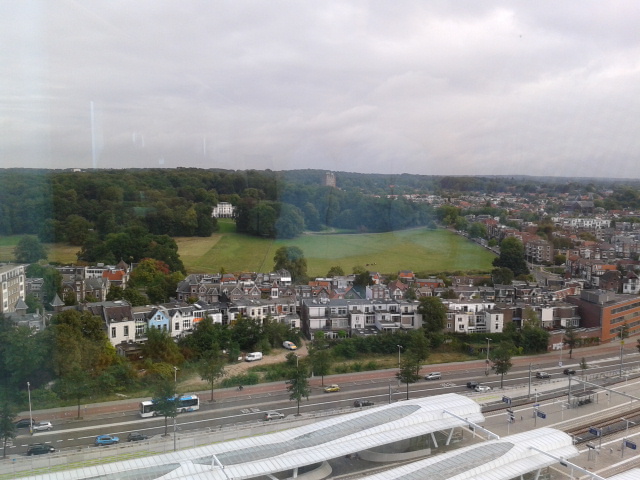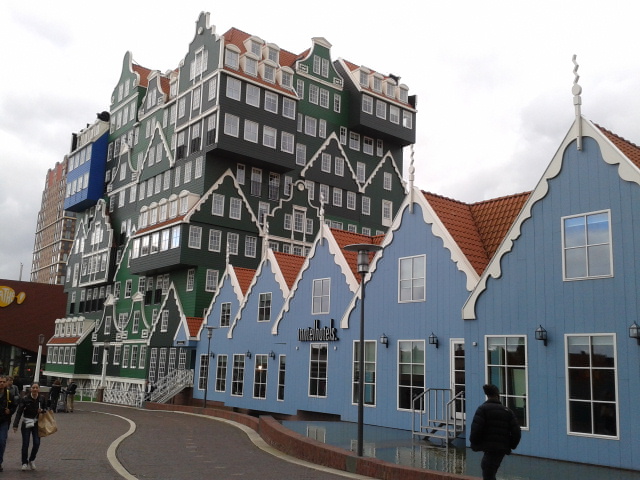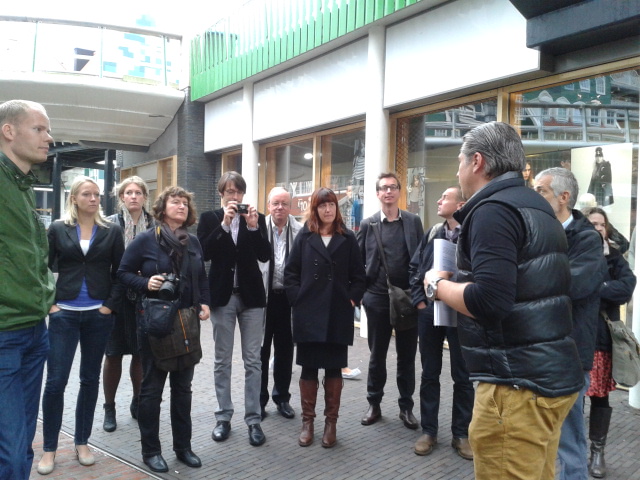I’m live blogging again from the seminar and today we’ve had a tour of the redevelopment of Arnhem Centraal Station, and heard about Arnhem City-Region’s efforts to integrate land use and transportation planning. Arnhem’s station area includes local and regional bus stations and regional and international trains. It works on four levels (including underground car and parking) and is expected to be complete by the end of 2014. As you can see, there is medium-density development around the station, since there has been a rail station in this location since the mid-1800s. The current redevelopment includes office towers, but given the glut of office space in The Netherlands these may take a while to fill up.
We also heard about TOD from our international experts, e.g. value capture tools for municipalities from Rachelle Alterman and rail developments in Armitière, and Lille from Alain l’Hostis. Alain told us about a new attempt in this area to target new development within 500m of rail stations, including specific goals for housing described in the Housing Plan. The quality criteria for TOD in this case is attractive regional railway supply, a transit-oriented urban development, high quality neighbourhood networks, quality links to the corridor, integrated planning processes, and commitment to a common future. While Lille is an internationally-known case, changes in Armitière are more recent. His work overlaps with that of Gebhart Wulfhorst, who discussed ten years of French-German collaboration through the Bahn Ville program: the first stage produced recommendations (2005) and the second focused on implementation. This was one of the few presentations to discuss combining the slower local modes with the faster regional modes: there was a focus on walking and neighbourhood mobility in Friedrichsdorf, something we never hear about in Amsterdam. Minor changes in the slow, neighbourhood network, if they were targeted in key areas, could have huge impacts on the broader regional network: Gebhart even referred to walking/walkability/neighbourhood mobility “as one of the most important success factors for TOD.”
Carey Curtis talked about overcoming implementation barriers in TOD through strong planning systems (defined roles for centers and networks), distinct policy to define TOD areas and densities, and prioritizing specific station areas. Carey’s and Jan Scheurer’s SNAMUTS tool measures accessibility of the various areas in Australian cities to determine where investment should be focused: do we focus on areas that already have good accessibility or try to improve areas with poorer accessibility? The governance model that seems to work the best at achieving TOD across cities is public-private coordination, e.g. redevelopment authorities in Australia. In Perth, Carey talked about how retailers had no experience of rail before recent TOD such as Subiaco, so they didn’t even understand that customers or employees might come to their stores by rail. But among planners, TOD has gone from specialized to generalized planning practice through mechanisms like Perth’s TOD Coordinating Committee (2001-2011).
Finally, in Zaandaam we had a tour of the rail station (about 10 minutes by train to Amsterdam) from the Municipality, which has relocated right beside the station in a new building. The station and retail street leading into the city have been redesigned following a modern take on traditional Zaanstad wood architecture; the crazy Innhotel has become iconic of the region.
On the other side of the station, there are still problems occupying the older existing office buildings due to the economic crisis, but the municipality has gotten the provincial environmental agency to locate there. Hermann Gelissen then presented the innovative StedenbaanPlus partnership between municipalities, regions, and other stakeholders (which is not yet legally binding) to develop an integrated regional-local transportation system. Today, David Levinson talked about the interrelationship between transportation and land use using London as an example (including both induced demand and induced supply), Tax Increment Financing, impact fees, air rights, and joint development between transportation authorities and developers. Michael Neuman posed some questions about TOD, including whether the term is inspirational, what image it invokes, and how it guides good design. His problem with the term is how everything is directed towards infrastructure, rather than people, cities, livability, or design. Paul Chorus discussed the Province of North Holland Strategic Plan, which has focused on maximizing efficiency of existing infrastructure. They have had some success in concentrating 38% of residential and 49% of employment within 1200m of rail stations, and the municipalities have now the interest and willingness to move forward with this ambition (the goal is to build 50% of new homes within these areas). The province has done some really in-depth analysis of the types of transportation flows, activities, and population at each node, categorizing each as “present”, “possible”, and “promising”.
It’s been a great seminar overall, with many connections made and a really interesting mix of people from practice and research. Seeing TOD examples that aren’t perfect, and are still in a state of construction, has been really useful for those of us who aren’t from The Netherlands.
Update: today’s and yesterday’s posts have been summarized for the University of Amsterdam’s new urban planning blog: www.urbanplanningams.wordpress.com




